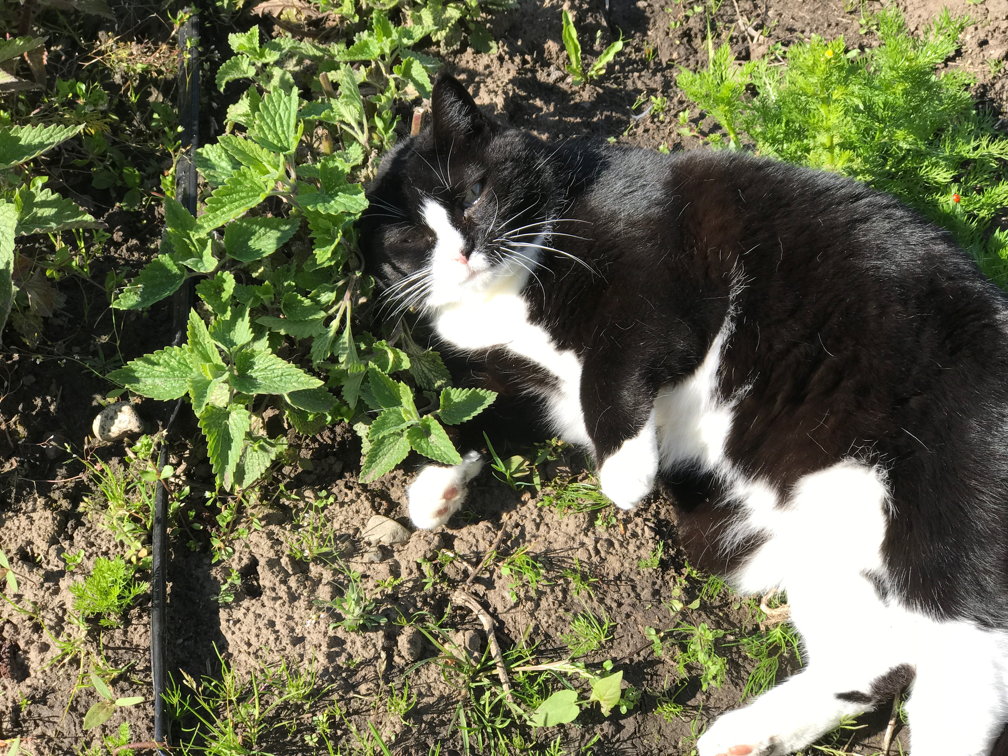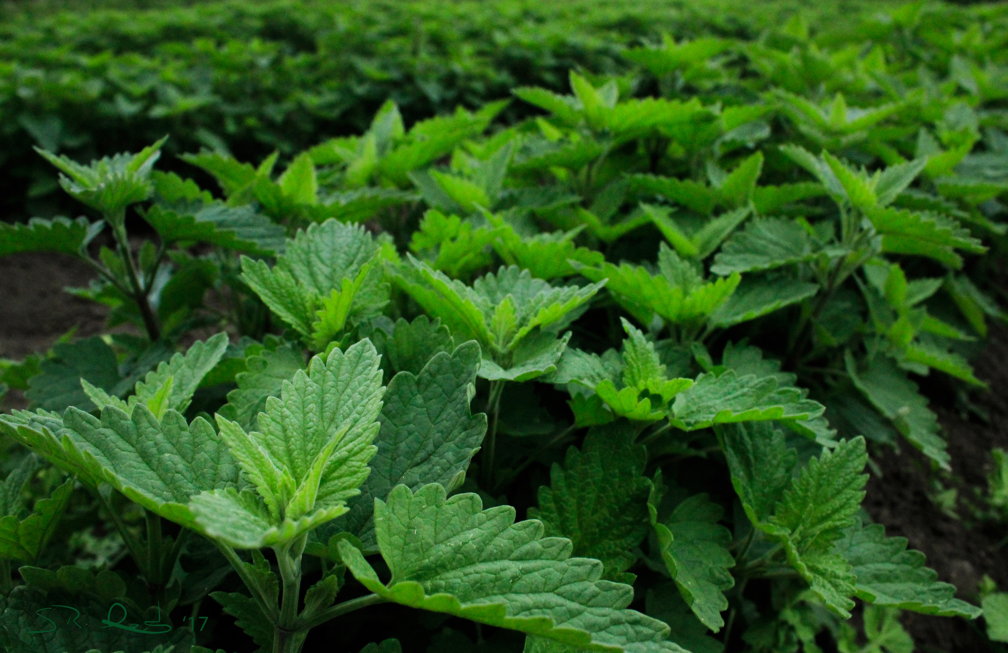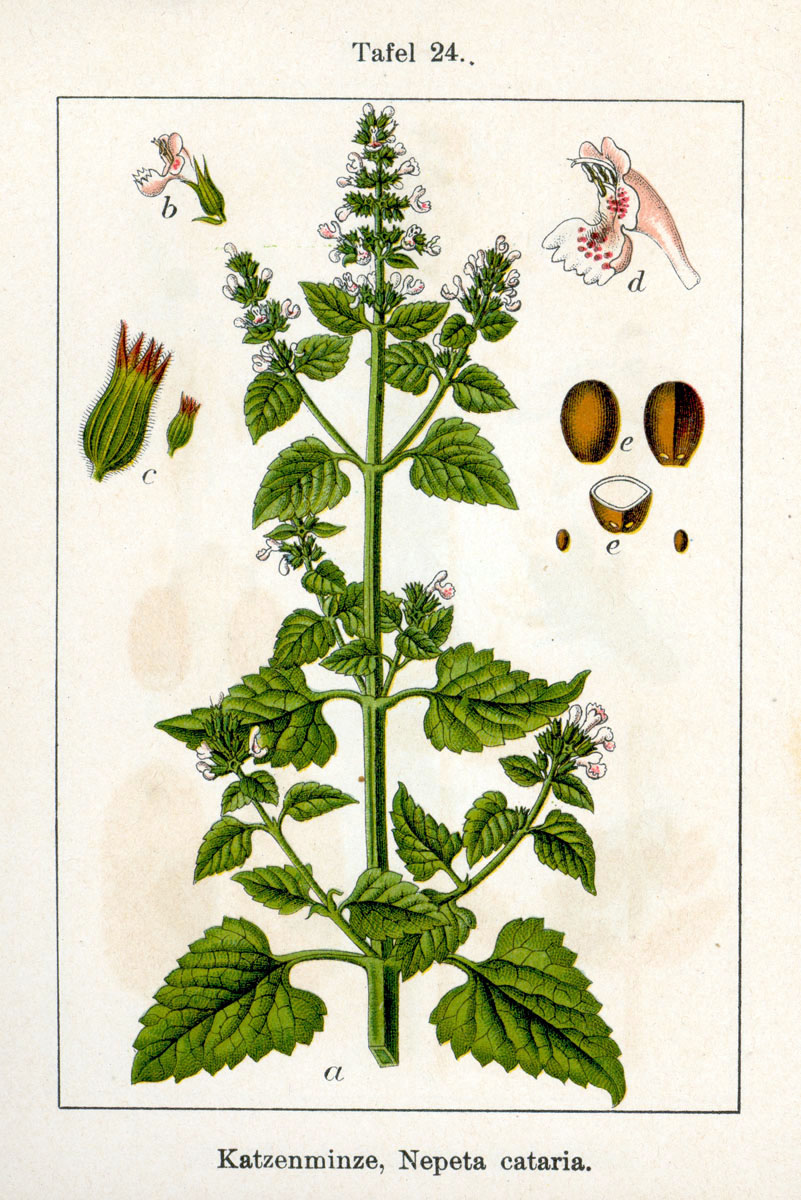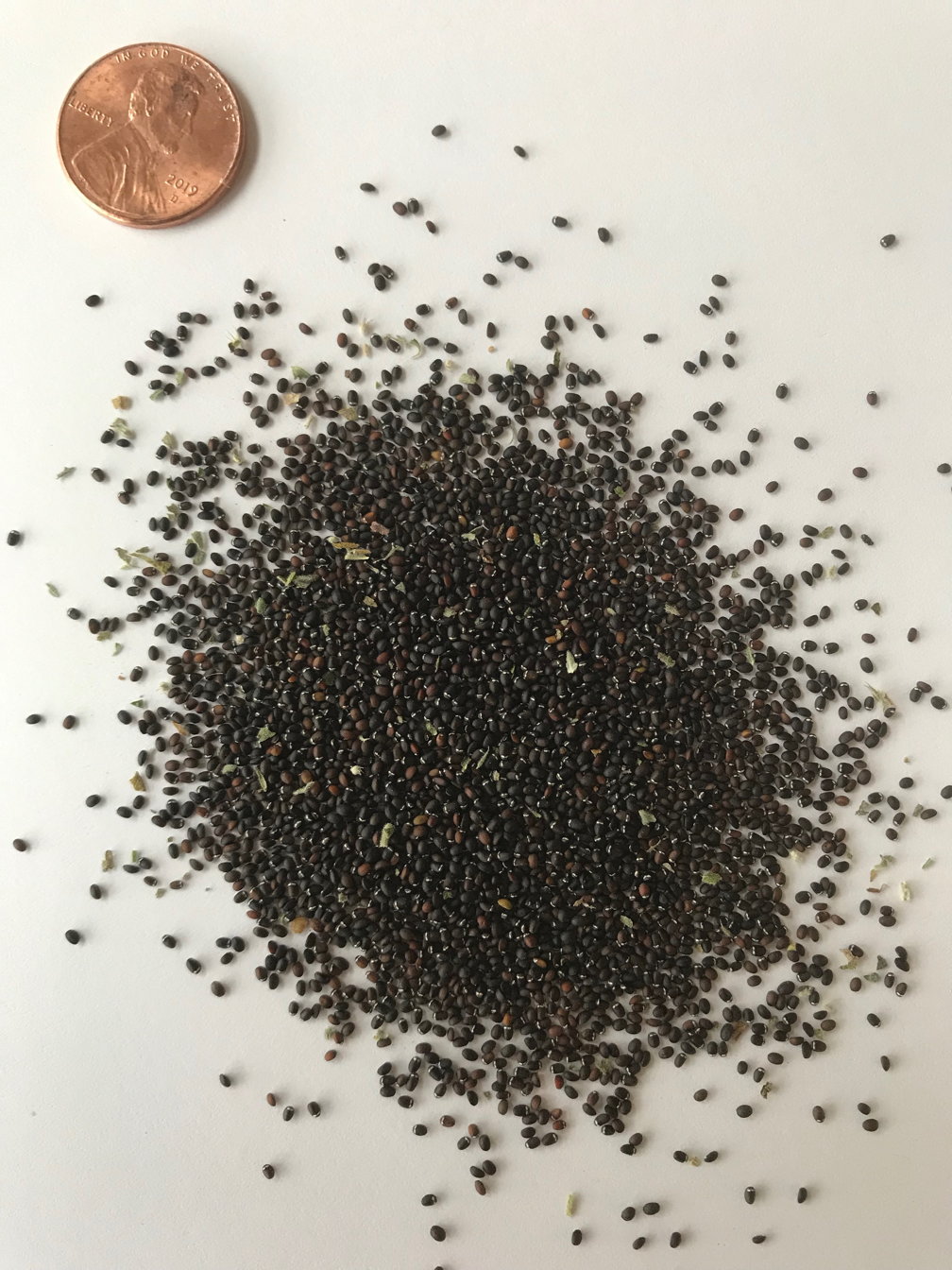by Georgie Smith

Ever wondered why cats love catnip so much, but humans don’t?
Well, turns out humans do have a lot of ‘non-cat’ uses for catnip, we just don’t know about them! Or perhaps, the problem has been, cats keep stealing the catnip before we ever get a chance to try it out for ourselves?
Whatever the reason, recent studies and anecdotal evidence have generated new interest in catnip, aka ‘Nepeta cataria,’ for human (not cat!) use. Assuming you can get it away from your kitty, of course.
All About Catnip

Like lavender, lemon balm, salvia, basil and most of our favorite aromatic and essential-oil producing herbs, catnip is a member of the mint or “Lamiaceae” family of plants. Which means it is a highly aromatic plant that produces lots of organic compounds with various effects and uses.
In the case of catnip, it’s most predominant, naturally-occurring chemical is ‘nepetalactone,’ a terpene with compounds very similar to the same ones found in valerian. A plant well-known for being a mild central nervous system sedative.
Terpenes, if you haven’t heard of them, are an organic hydrocarbon, famous for creating the ‘aroma’ in plants. Recent science and heightened interest in using plants for human health, has uncovered many beneficial uses for terpenes. Mints, lavender, herbs, citrus, pine trees and, perhaps the most famous ‘terpene-producing’ plant of all, cannabis, are all-chock full of various naturally produced, and human-health-supporting, terpenes.
In the case of catnip, ‘nepetalactone’ is well-known for having a noticeable effect on cats. And anecdotally and historically known to help humans with anxiety, insomnia, migraines and many other uses – including flatulence!
Catnip through History, what Came First the ‘Cat’ or the ‘Nip’

If you’ve ever watched your cat roll around, high as a kite, in a bag of freshly-opened catnip, there is no wonder how the plant received its name.
The plant itself is native to Europe and Asia and is said to have been named after the ancient Etruscan city of “Neptic.” The plant was quite popular as an herbal remedy in ancient and medieval times, used for many skin ailments. While its main claim to fame has been as a relaxation aid, it was said that catnip roots, when chewed, ‘can make a person fierce and quarrelsome.’
Catnip was also used in cooking. It was brought to America in the 1800s from plant cuttings settlers brought with them. Native Americans also began incorporating catnip into their foods and medicinal therapies after being introduced to the plant by early settlers.

Catnip Today – A Natural Insect Repellent?
One of the more interesting discoveries with catnip is that is a powerful natural repellent of insects. Though actually, this was anecdotally known about catnip for years (including a supposed ability to rebel rodents as well!).
In 2009 however, DuPont took it to the next level, licensing a new, human-safe insect repellent derived from catnip. The “Refined Oil of Nepeta cataria” was, at the time, the first new insect repellent biopesticide to be registered with the EPA in eight years. It is purported to work like DEET, without the harmful and common skin reactions.
But…Can Catnip Get You High?
While historically – and more recently – there have been incidents and anecdotes of humans smoking ‘catnip’ to ‘get high,’ most evidence suggests that while catnip trips out our furry feline companions, it doesn’t have that much juice when it comes to an ‘intoxicating’ element on humans.
Catnip, or more accurately nepetalactone, acts as a natural mimic to a pheromone that cats adore. Or at least, most of them. Interestingly enough, only about 70 percent of cats have the ‘catnip gene’ and so 30 percent don’t react to catnip and scientists aren’t sure why. Humans however don’t react to the same pheromones as cats. Hence, while you might catch your kitty rolling around in that bag of catnip, probably you won’t find your spouse doing the same thing!
Anecdotally, smoking catnip is purported to ‘relax’ humans, again acting as a natural sedative and anti-anxiety relief.
Catnip Tea For the Win
The most common and well-received use for catnip for humans these days is in tea form. Many tea and herbal companies sell teas either with catnip mixed in, or straight as is.

It is also quite easy to make yourself, simply using fresh or dried catnip leaves and steeping in hot water. Of course, make sure to buy fresh – or recently dried, locally and naturally grown catnip (if you don’t grow it yourself!) to avoid any harmful chemicals in your tea. And to make sure the leaves, which do lose their potency fairly rapidly, are as safe and effective as possible.
And while science and the medical establishment has yet to positively confirm these uses, catnip tea is purported to be helpful as a:
- stress reliever
- menstrual aid
- relieving flu and cold symptoms
- decongestant
- digestive aid
- treating diarrhea
Is Catnip Safe for Humans?
While catnip is generally considered safe for humans when used in moderation, caution is always advised when using a natural remedy.
In particular, catnip is considered ‘possibly unsafe’ for children and is ‘likely unsafe’ for pregnant or nursing women. It can cause headaches, vomiting and a feeling of being ill when over-dosed or some people may just have a stronger reaction to it than others.
Always use common sense and do your research before using any natural remedy!

For more information on the fascinating history and uses for catnip, check out these resources:
https://www.leafly.com/news/science-tech/does-catnip-get-cats-high
https://www.healthline.com/health/catnip-tea#uses
https://www.thoughtco.com/nepetalactone-chemistry-of-catnip-608397
https://www.ncbi.nlm.nih.gov/pmc/articles/PMC1480656/pdf/canvetj00079-0049.pdf
https://www.sweetsmokeherbs.com/t-art_can_you_smoke_catnip.aspx
http://catniptoy.co.uk/the-history-of-catnip/
